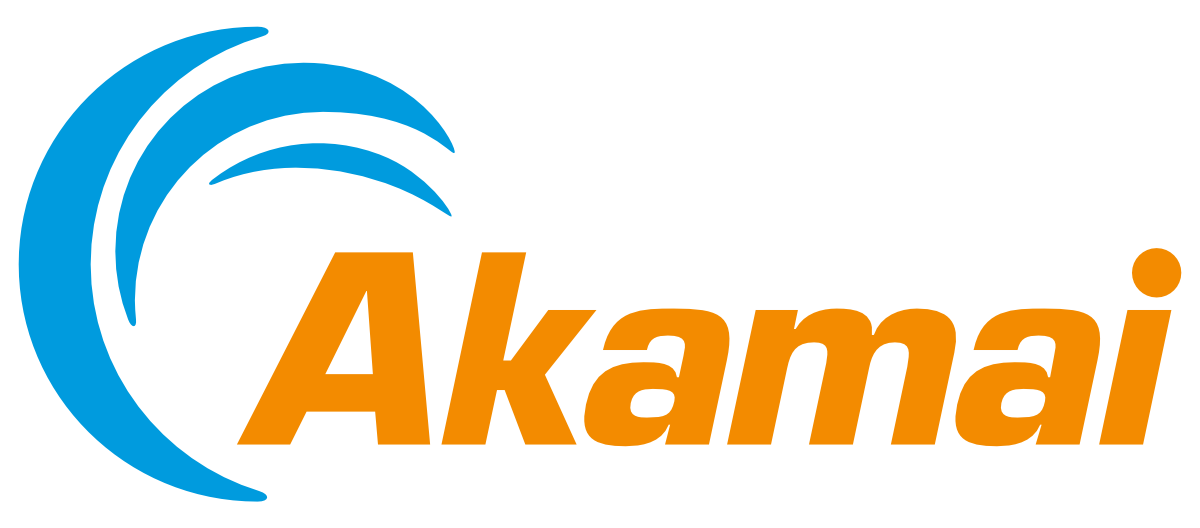VMblog: If you were giving a KubeCon attendee a quick overview of the company, what would you say? How would you describe the company?
Matt Butcher: Fermyon is leading the next wave (i.e. post-VMs and post-Containers) of cloud computing with the first cloud-native WebAssembly functions-as-a-service (FaaS) that lets developers build better serverless apps faster. Focused on empowering cloud developers, Fermyon has built a suite of products that enable them to quickly realize the solutions they are thinking about creating by focusing on the code that brings business value instead of the obligatory foundation code. The company offers four products:
- Fermyon Spin (open source): The friendly developer tool for faster, denser apps (powered by WebAssembly)
- Fermyon Cloud: The quickest way to deploy and manage serverless apps (powered by WebAssembly)
- SpinKube (open source): Hyper-efficient serverless on Kubernetes that meets platform engineers where they are today.
- Fermyon Platform for Kubernetes: Enterprise grade support for faster, denser serverless compute (powered by WebAssembly) for Kubernetes.
VMblog: Your company is sponsoring this year's KubeCon + CloudNativeCon event. Can you talk about what that sponsorship looks like?
Butcher: Fermyon is in its fourth year of KubeCon Sponsorship. We're pleased to be participating in the Exhibitor Hall with a Silver level booth in a central location.
We'll also be presenting a few accepted talks and offering both public and private demos of our product(s). We also love giving away lots of t-shirts!
VMblog: How can attendees of the event find you? What do you have planned at your booth this year? What type of things will attendees be able to do at your booth?
Butcher: Fermyon can be found at Booth Q1 in the Exhibit Hall, right next to Replicated and a few booths away from the CNCF Project Area. We'll be showing how serverless WebAssembly apps can run inside your Kubernetes cluster side-by-side with your containerized apps via SpinKube. We have a great demo of 50x application density on a RaspberryPi cluster, demonstrating WebAssembly performance, density, portability and operability on very different compute profiles. Attendees will be able to see the demo live, get inspired by several sample serverless applications (powered by WebAssembly) and talk to technical staff about specifics of their application profiles or WebAssembly standards questions. We'll also be launching something new that week!
VMblog: Have you sponsored KubeCon + CloudNativeCon in the past? If so, what is it about this show that keeps you coming back as a sponsor?
Butcher: Yes. We love KubeCon. It's the only show during the year that combines a critical mass of the cloud computing technology supply universe with a vast array of cloud-computing experts ranging from developers, to platform and devops engineers, to architects, to cloud-computing technical leaders. It's the single best place to get concentrated feedback about our products and begin the exploration into problems developers, operators, and architects are trying to solve.
VMblog: What do you attribute to the success and growth of this industry?
Butcher: Cloud computing is the "utility" of the 21st century (as electricity was to the 20th century). Our world relies on computing and that computing is diverse, existing predominantly away from the end-user (i.e. "in the cloud"). With that growing demand at unprecedented rates, WebAssembly is poised to become the third wave of cloud computing, pairing well with containers and VMs, but bringing with it a new level of performance and portability.
VMblog: Do you have any speaking sessions during the event? If so, can you give us the details?
Butcher: Yes; several. We have talks accepted that cover:
- Why Serverless is Trending Again
- A walking tour of wasm tools
- Composable Concurrency for WebAssembly Components
- The Future of Green Cloud: Serverless WebAssembly on Arm64 Architecture
VMblog: What are you personally most interested in seeing or learning at KubeCon + CloudNativeCon?
Butcher: As analyst Torsten Volk showed, WebAssembly was one of the predominant themes at KubeCon Paris. I think that will carry over to Salt Lake City. With SUSE, Microsoft, NGINX, Docker, Akamai, Ampere and many other industry now diving into this technology alongside Fermyon, I think we'll see more and more use cases and stories about how WebAssembly is solving real problems. I also expect telemetry and observability to continue making waves this KubeCon.
VMblog: What kind of message will an attendee hear from you this year? What will they take back to help sell their management team and decision makers?
Butcher: That WebAssembly is "crossing the chasm." With the ratification of WebAssembly System Interface (WASI) 0.2 eight months ago, tremendous strides have been made by many of the compiler ecosystems - including Javascript, Rust, and .NET - to incorporate the latest improvements in WASI, which includes significant support for networking with sockets. We're especially excited about the Microsoft .NET team's embrace of WebAssembly and commitment to incorporating the latest standards as they evolve. With the maturation of asynchronous implementations within WebAssembly's Preview 3, there is very little work remaining for the WebAssembly community to complete to unlock running the vast majority of workloads in the cloud. More importantly we're seeing companies like ZEISS take the stage at KubeCon (Paris) to discuss how their high-volume, HTTP-based workloads - which are costing a fortune and not producing the desired throughput - have been transformed with WebAssembly. We know that dozens of Fortune 500 companies are deeply and actively working with WebAssembly to evaluate the best-fit workloads in order to begin transitioning some of those production workloads to WebAssembly.
VMblog: Can you double click on your company's technologies? And talk about the types of problems you solve for a KubeCon + CloudNativeCon attendee.
Butcher: Attendees have numerous problems: cloud-computing, especially in a Kubernetes cluster, is inefficient - wasting, on average, 85% of the compute asset allocated to them. Developers are less productive due to the complexities of coordinating their applications with deployment infrastructure. Containers are large and unwieldy to work with and, due to their size and embedded assets, represent vastly larger security attack surfaces. Platform engineers have to spend way too much time on day-to-day management of underlying resources and "babysitting" of their kubernetes clusters. Architects want to be able to apply the best software language to the specific problem within their application(s) and internal platforms - sometimes using Rust for performance, or Python for number-crunching, or Javascript for user experiences but today's cloud-computing structure prohibits this kind of blended application. Digital commerce and media publishers, in particular, suffer from latency issues that cost them users and revenue.
WebAssembly, broadly, and Fermyon's product line specifically solve these myriad problems for corporate architects and leaders.
- Spin enables developers to be highly productive, quickly - enabling them to go from "blinking cursor to deployed app in 60 seconds". Spin creates very small, portable, polyglot, blazingly-fast binaries that can be deployed to almost any compute target.
- SpinKube enables these amazing applications to live alongside containers and within the familiar and provisioned Kubernetes clusters that most organizations are using - whether on-prem or hosted.
- Fermyon Platform for Kubernetes supercharges the performance and density of SpinKube, offering 50x more application per Kubernetes node.
- Fermyon Cloud is the easiest place to quickly deploy and test your Spin applications before moving to a SpinKube or Fermyon Platform for Kubernetes instance.
VMblog: While thinking about your company's solutions, can you give readers a few examples of how your offerings are unique? What are your differentiators? What sets you apart from the competition?
Butcher:
- Spin is the only WebAssembly developer tool recommended and used every day by Microsoft, Suse, F5/NginX, Docker, Redhat and others. It's also the only WebAssembly developer tool that enables you to get your application written and deployed in the blink of an eye.
- SpinKube is the only bespoke execution engine for putting WebAssembly applications in a Kubernetes cluster, running it in real-time alongside deployed containers while also delivering 2-3x better application densities.
- Fermyon Platform for Kubernetes achieves 50x density and sub-millisecond cold-start times for any Spin application.
- Fermyon Cloud automatically integrates KV and other data stores enabling you to develop locally and immediately deploy to the cloud with the same data structures, while also receiving sub-millisecond cold-start times.
VMblog: Where does your company fit within the container, cloud, Kubernetes ecosystem?
Butcher: At the compute layer. Spin applications and execution engines are deployed directly on VMs or right next to any container deployment in a Kubernetes cluster. We're tackling the core problems of cloud-computing - inefficiency, complexity, poor-security, poor developer experience, cumbersome management overhead - at the developer-tool layer and the compute layer.
VMblog: KubeCon + CloudNativeCon is typically a great venue for a company to launch a new product or an update to an existing product. Will your company be announcing anything new? If so, can you give us a sneak preview?
Butcher: We most certainly will! We're not going to spoil the surprise yet, but we'll give you a clue: The WebAssembly Component Model is the secret to unlocking a new way of building cloud native applications. We're about to show a big leap forward on components.
VMblog: With regard to containers and Kubernetes, is there anything holding it back from a wider distribution? If so, what is it? And how do we overcome it?
Butcher: Yes; containers are inefficient - wasting 85% of their available compute capacity. They are slow to start up, and hard to observe while in production. We believe WebAssembly-based computing is the core to overcoming these limitations - enabling companies to get the best of containers and Kubernetes but also tackling the things that set it back in parallel.
VMblog: Are companies going all in for the cloud? Or do you see a return back to on-premises? Are there roadblocks in place keeping companies from going all cloud? And if so, what are they, and how do they address that challenge?
Butcher: The data seems inconclusive at this point. But it does make good sense that some workloads would run on-premises, while others would take advantage of robust cloud services. This has been one of our driving motivations behind WebAssembly, because portability of a workload means that it's up to the platform engineer where and how to run a workload.
VMblog: What is the current state of server-side WebAssembly and is it ready for production applications?
Butcher: Server-side WebAssembly (WASI) is maturing and in its middle-stages of development, now being ready for a large array of production workloads, especially those that are HTTP-driven. It is absolutely ready for production applications, especially, again, for HTTP-driven applications. With WASI 0.2 (ratified in March 2024), the standard now includes socket support, opening up a larger universe of workload use cases and Preview 3 now includes support for asynchronous communications, expanding the use case universe further. The last major piece for the standard before full maturity is the incorporation of a threading solution, which is proceeding nicely within the standards-making community and process.
We’re seeing dozens of Fortune 500 companies (at least ZEISS, Adobe, and American Express publicly) engaging deeply in onboarding WebAssembly, evaluating its strengths and matching those with the the most appropriate high-volume workloads they have.
VMblog: What do you view the enterprise adoption process for WebAssembly to look like?
Butcher: WebAssembly fundamentally brings a third wave of cloud computing to the market. Because cloud-computing is "the 21st century's core utility" it is foundational. Large organizations don't make foundational changes overnight; nor should they - there's too much at risk. We see organizations taking a very logical and measured approach to onboarding WebAssembly - by initially experimenting with the technology to understand its benefits, then evaluating which internal workloads have the best profile (HTTP-based, high-volume) and slowly, workloadby- workload putting them into production. And, meanwhile, working harder to influence the compiler ecosystems to incorporate support for WASI faster.
For an example of this measured approach and lessons therein, see Kai Walter's, Distinguished Architect at ZEISS recent blog post on WebAssembly.


















